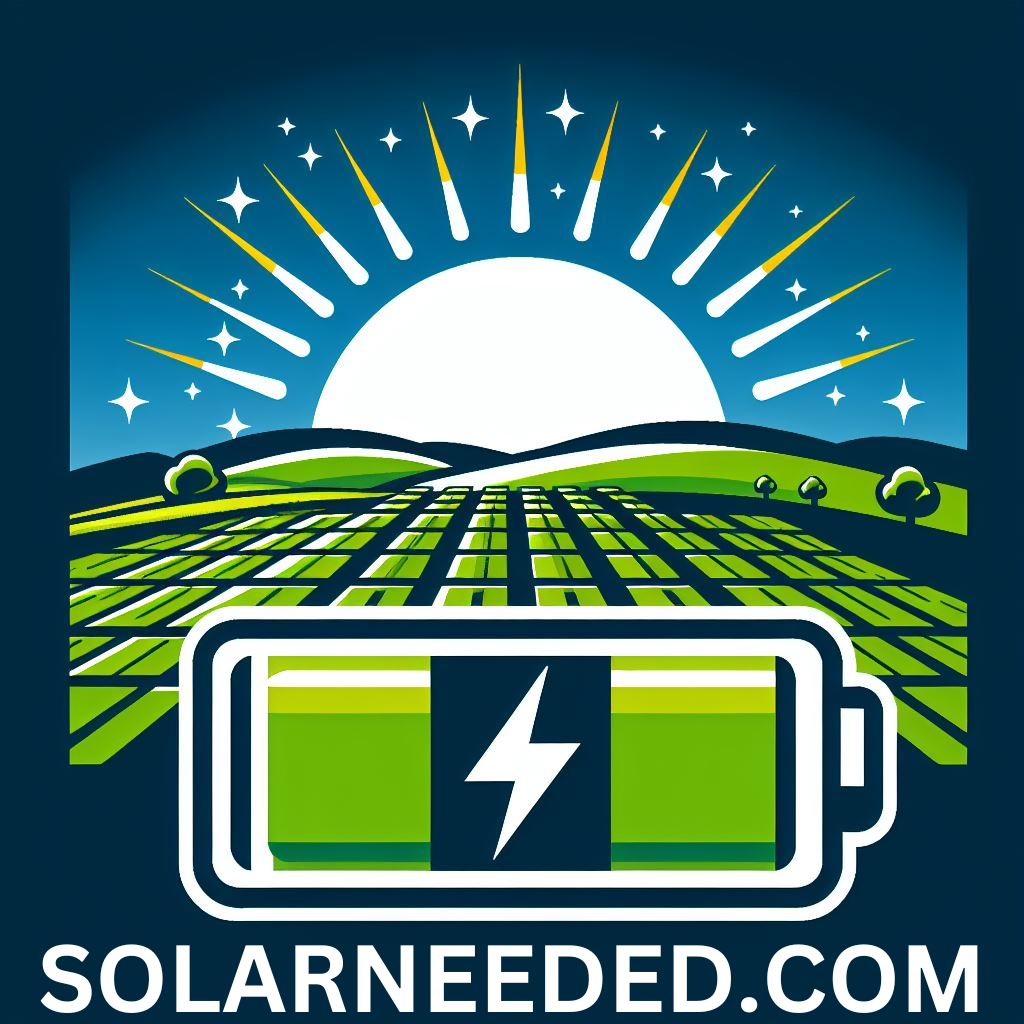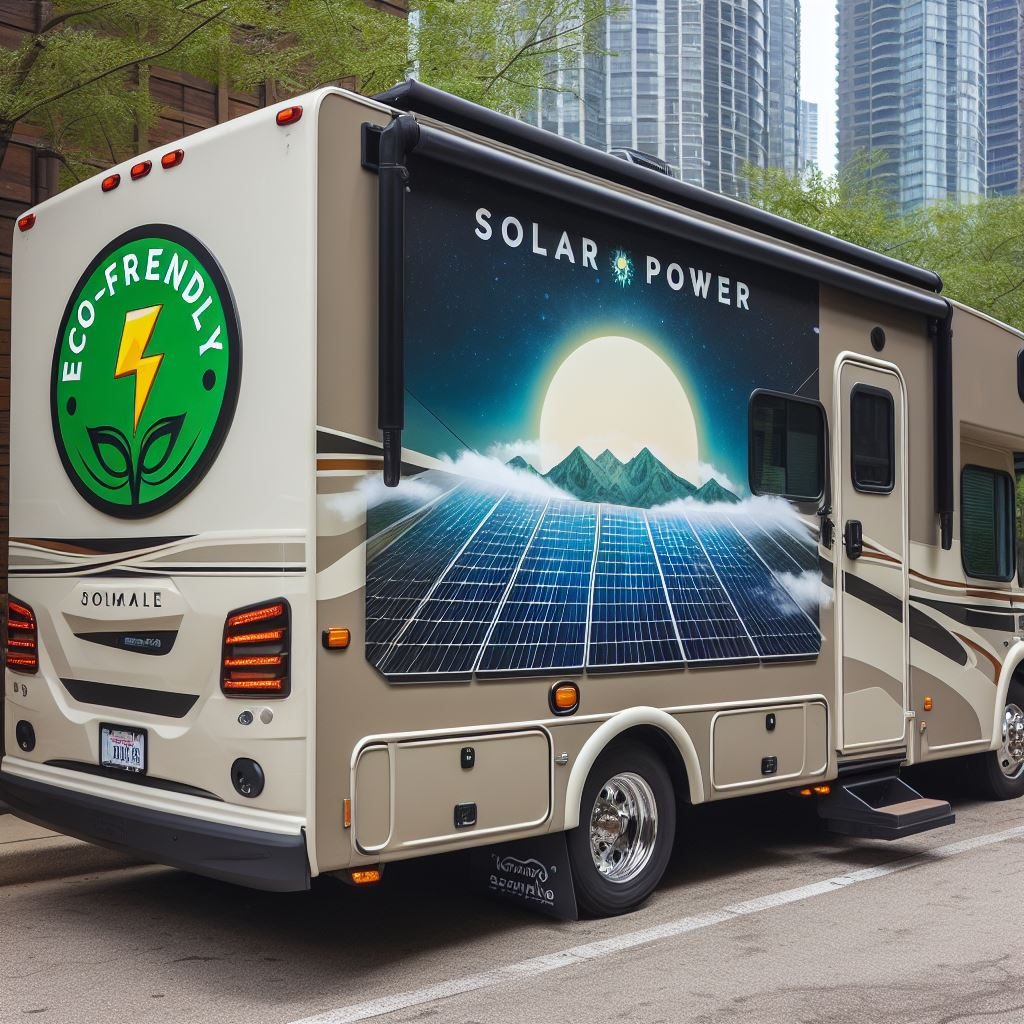Introduction
As an RV owner, you’re no stranger to the allure of the open road, the thrill of exploration, and the freedom that comes with life on wheels. But what if you could harness the power of the sun to enhance your RV experience? Enter solar RVs—a game-changer for modern nomads seeking sustainable energy solutions. In this comprehensive guide, we’ll delve into the world of solar power for recreational vehicles, addressing common concerns, debunking myths, and providing practical advice. Let’s embark on this sun-powered journey together!
Why Go Solar? The Benefits of Solar RVs
Reduced dependence on hookups is one of the primary benefits of solar RVs. Say goodbye to crowded RV parks and embrace off-grid adventures. With solar power, you can camp in remote locations without worrying about finding an electrical hookup. This newfound freedom allows you to explore nature’s hidden gems and experience true solitude.
Moreover, solar RVs contribute to eco-friendly travel. By minimizing your carbon footprint, you’re doing your part to protect the environment. Solar energy is clean, renewable, and abundant, making it an ideal power source for environmentally conscious RVers.
In the long run, solar RVs can lead to significant cost savings. While the initial investment in a solar setup may seem daunting, you’ll soon reap the benefits of reduced campground fees and electricity bills. Plus, solar power operates silently, unlike noisy generators that can disrupt the peace and tranquility of your surroundings.
Lastly, solar-equipped RVs are in high demand. As more people recognize the advantages of solar power, the resale value of your RV may increase. Investing in a solar setup not only enhances your own RV experience but also makes your vehicle more attractive to potential buyers in the future.
Understanding Solar Basics
To fully grasp the potential of solar RVs, it’s essential to understand the basics of solar technology. Solar panels work by converting sunlight into electricity through a process called photovoltaics. When sunlight hits the solar cells in the panels, it excites electrons and creates an electrical current that can be harnessed to power your RV’s appliances and devices.
There are two main types of solar panels: monocrystalline and polycrystalline. Monocrystalline panels are made from a single crystal of silicon and are known for their higher efficiency and sleek appearance. On the other hand, polycrystalline panels are composed of multiple silicon crystals and tend to be less expensive, albeit slightly less efficient.
To determine the size of your solar setup, you’ll need to calculate your RV’s energy needs. Consider the appliances and devices you regularly use, such as lights, refrigerators, laptops, and televisions. Consult their power ratings and estimate the average daily usage to get a rough idea of your energy requirements.
It’s important to note that solar panel efficiency can be affected by various factors, including temperature, shading, and the angle at which the panels are installed. Optimal panel placement and regular maintenance can help maximize your solar system’s performance.
Choosing the Right Solar System
When selecting a solar system for your RV, several key components come into play. First, consider the panel size and wattage. The available roof space on your RV will dictate the maximum number and size of panels you can install. Opt for high-quality panels with a wattage that aligns with your energy needs.
Next, focus on battery considerations. Deep-cycle batteries are specifically designed for solar applications, as they can withstand repeated charging and discharging cycles. Lithium-ion batteries are becoming increasingly popular due to their lightweight nature, long lifespan, and faster charging capabilities compared to traditional lead-acid batteries. Determine the appropriate battery capacity based on your energy consumption and desired off-grid duration.
Charge controllers play a crucial role in regulating the flow of energy from the solar panels to the batteries. They prevent overcharging and ensure optimal battery health. Pulse Width Modulation (PWM) and Maximum Power Point Tracking (MPPT) are two common types of charge controllers, with MPPT being more efficient but also more expensive.
Inverters are responsible for converting the DC power generated by the solar panels into AC power, which is compatible with most RV appliances. Choose an inverter with a wattage that matches your power requirements and consider features like pure sine wave output for sensitive electronics.
Lastly, pay attention to wiring and connections. Use appropriately sized wires and secure all connections to ensure a safe and efficient setup. Consult wiring diagrams and seek professional assistance if you’re unsure about any aspect of the installation process.
Installation Made Easy
When it comes to installing a solar system on your RV, you have two options: DIY or professional installation. DIY installation can be a rewarding and cost-effective approach if you have the necessary skills and tools. However, if you lack experience or feel uncomfortable working with electrical systems, hiring a professional installer is the safer and more reliable choice.
If you opt for the DIY route, follow a step-by-step installation guide to ensure a smooth process. Begin by mounting the solar panels on your RV’s roof, ensuring they are securely fastened and properly sealed to prevent leaks. Next, connect the panels to the charge controller using appropriately sized wires. Install the batteries and inverter, following the manufacturer’s instructions and wiring diagrams. Finally, connect all the components and double-check your work before testing the system.
To aid in your installation, gather all the necessary tools and materials beforehand. This may include a drill, screwdrivers, wire cutters, crimping tools, sealant, and mounting hardware. Don’t forget to prioritize safety by wearing protective gear and disconnecting the RV’s main power supply before starting any electrical work.
Maximizing Solar Efficiency
To get the most out of your solar RV setup, it’s crucial to optimize panel placement and adapt to changing conditions. Ideally, solar panels should face south (in the northern hemisphere) and be angled to maximize exposure to direct sunlight. Regularly adjust the tilt of your panels to account for seasonal changes in the sun’s position.
Shading can significantly reduce solar panel efficiency, so be mindful of nearby trees, buildings, or other obstructions that may cast shadows on your panels. If shading is unavoidable, consider using bypass diodes or opting for shade-tolerant solar cells.
Regularly cleaning your solar panels can also improve their performance. Dust, dirt, and bird droppings can accumulate on the surface, blocking sunlight and decreasing output. Use a soft brush or cloth and mild soap to gently clean the panels, being careful not to scratch the surface.
Common Concerns Addressed
One of the most common concerns among RV owners considering solar power is the cost versus benefit. While the initial investment in a solar setup can be substantial, it’s essential to consider the long-term savings on campground fees and electricity bills. Additionally, the increased flexibility and eco-friendliness of solar power add intangible value to your RV lifestyle.
Another concern is the weight of solar panels and their impact on roof integrity. Modern solar panels are relatively lightweight, and most RV roofs are designed to handle the additional load. However, it’s always wise to consult your RV manufacturer or a professional installer to ensure your roof can support the weight of the panels and mounting hardware.
Overcharging and battery health are also important considerations. Quality charge controllers prevent overcharging by regulating the flow of energy from the panels to the batteries. They ensure that your batteries receive the optimal charge level and protect them from damage caused by excessive charging.
Off-grid challenges, such as surviving cloudy days or nights without shore power, can be mitigated by properly sizing your solar setup and battery bank. Consider your energy needs and the expected weather conditions in the areas you plan to visit. Having a backup generator or additional battery capacity can provide peace of mind during extended periods of low solar input.
Lastly, be aware of any regulations or permits required for solar installations on RVs. Some campgrounds or regions may have specific rules regarding the use of solar power. Research the areas you plan to visit and ensure compliance with local regulations to avoid any potential issues.
Real-Life Stories
Learning from the experiences of other solar-powered RVers can be invaluable. Seek out inspiring tales from those who have successfully embraced the solar lifestyle. Read blogs, join online forums, and attend RV rallies to connect with like-minded individuals and glean insights from their journeys.
Pay attention to the lessons learned by experienced solar enthusiasts. They can share valuable tips on maximizing efficiency, troubleshooting common issues, and avoiding costly mistakes. Don’t be afraid to ask questions and seek advice from those who have already navigated the path to solar RV success.
Maintenance Tips and Troubleshooting
To keep your solar RV setup in top condition, perform regular maintenance and seasonal checks. Before storing your RV for the winter, clean the solar panels, inspect the wiring and connections, and ensure the batteries are properly charged. When preparing for spring adventures, re-evaluate your setup and make any necessary adjustments or repairs.
If you encounter issues with your solar system, refer to troubleshooting guides or seek assistance from experienced solar users or professionals. Common problems may include low power output, faulty connections, or malfunctioning components. By familiarizing yourself with potential issues and their solutions, you can quickly diagnose and resolve problems, minimizing downtime and ensuring a reliable power supply.
In the event of prolonged cloudy weather or unexpected solar system failures, having an emergency backup plan is crucial. Consider carrying a portable generator or extra battery capacity to cover your essential power needs until the sun returns or repairs can be made.
Solar Accessories and Upgrades
As you become more comfortable with your solar RV setup, you may want to explore additional accessories and upgrades to enhance your experience. Portable solar panels are an excellent option for boondocking or camping in areas with limited roof space. These lightweight panels can be easily set up and adjusted to maximize sun exposure.
Solar generators offer a convenient backup power solution, combining a battery, inverter, and charge controller in a compact, portable unit. They provide a reliable source of electricity for essential appliances and can be recharged using solar panels or shore power.
Smart energy management systems allow you to monitor and optimize your solar setup in real-time. These devices provide detailed insights into your energy production and consumption, helping you make informed decisions about power usage and battery health. Some systems even offer remote monitoring and control via smartphone apps, giving you complete visibility and control over your solar RV’s performance.
Conclusion
Embracing solar power for your RV can be a transformative experience, offering freedom, sustainability, and cost savings. By demystifying the world of solar RVs and providing a comprehensive handbook, we hope to empower you to make informed decisions and embark on your own sun-powered adventures.
Remember, the journey to solar RV mastery is an ongoing process. As you gain experience and encounter new challenges, continue to learn, adapt, and share your knowledge with others. By joining the growing community of solar RV enthusiasts, you’ll find support, inspiration, and endless opportunities for exploration.
So, grab your shades, unfold those panels, and let the sun be your co-pilot on this exciting journey. With the power of solar energy at your fingertips, the open road has never looked brighter. Happy solar RVing!
**References:**
- “A Comprehensive Guide to RV Solar Systems.” Mobile Solar Power, [https://www.mobilesolarpower.net/rv-solar-systems/](https://www.mobilesolarpower.net/rv-solar-systems/). Accessed [3/8/2024].
- “RV Solar Power: The Ultimate Guide.” Wholesale Solar, [https://www.wholesalesolar.com/blog/rv-solar-power/](https://www.wholesalesolar.com/blog/rv-solar-power/). Accessed [3/8/2024].
- “The Ultimate Guide to RV Solar Power.” Renogy, [https://www.renogy.com/rv-solar-power-guide/](https://www.renogy.com/rv-solar-power-guide/). Accessed [3/8/2024].
- “RV Solar Power: How to Install Solar Panels on Your RV.” RVshare, [https://rvshare.com/blog/rv-solar-power/](https://rvshare.com/blog/rv-solar-power/). Accessed [3/8/2024].


Leave a Reply